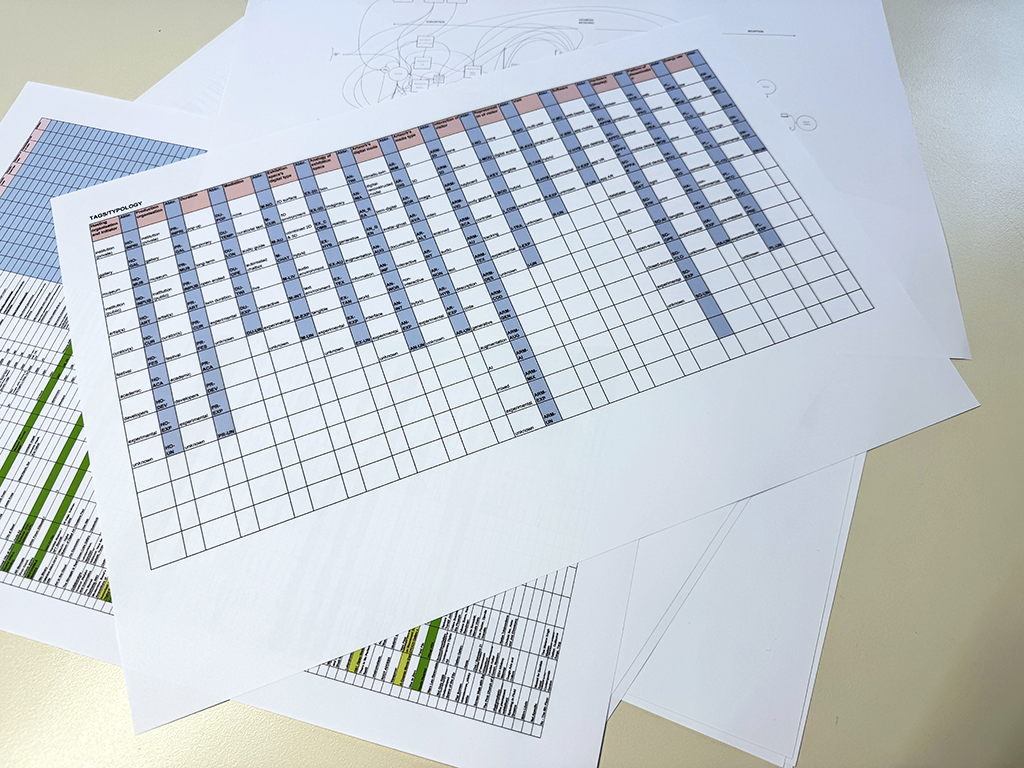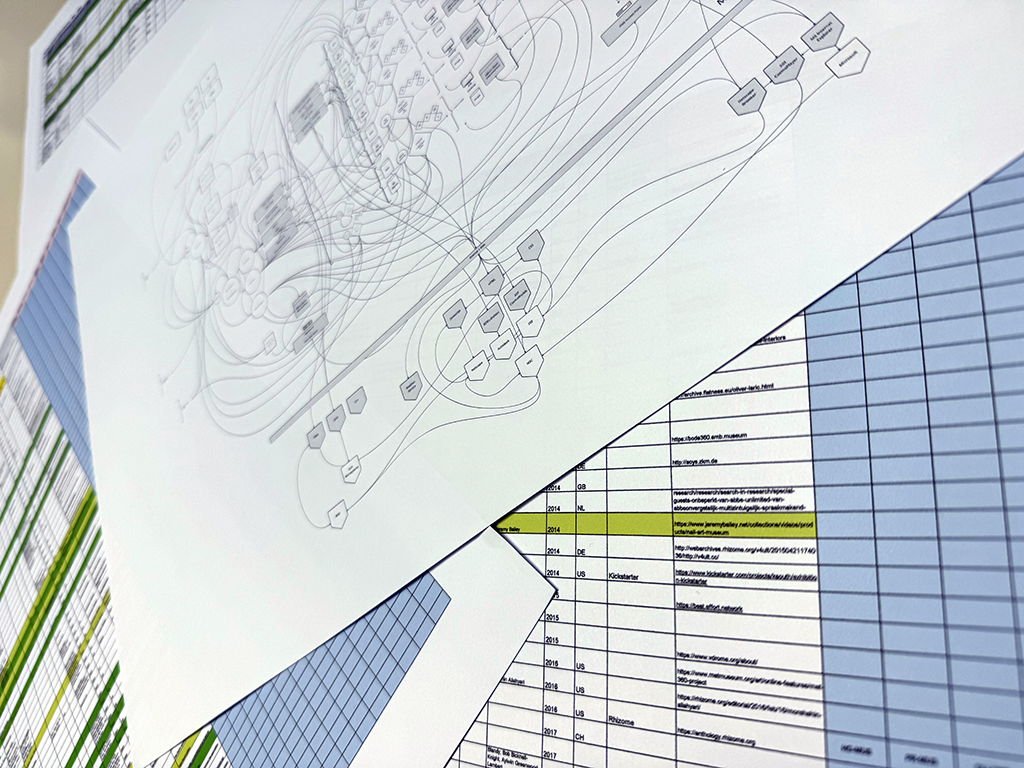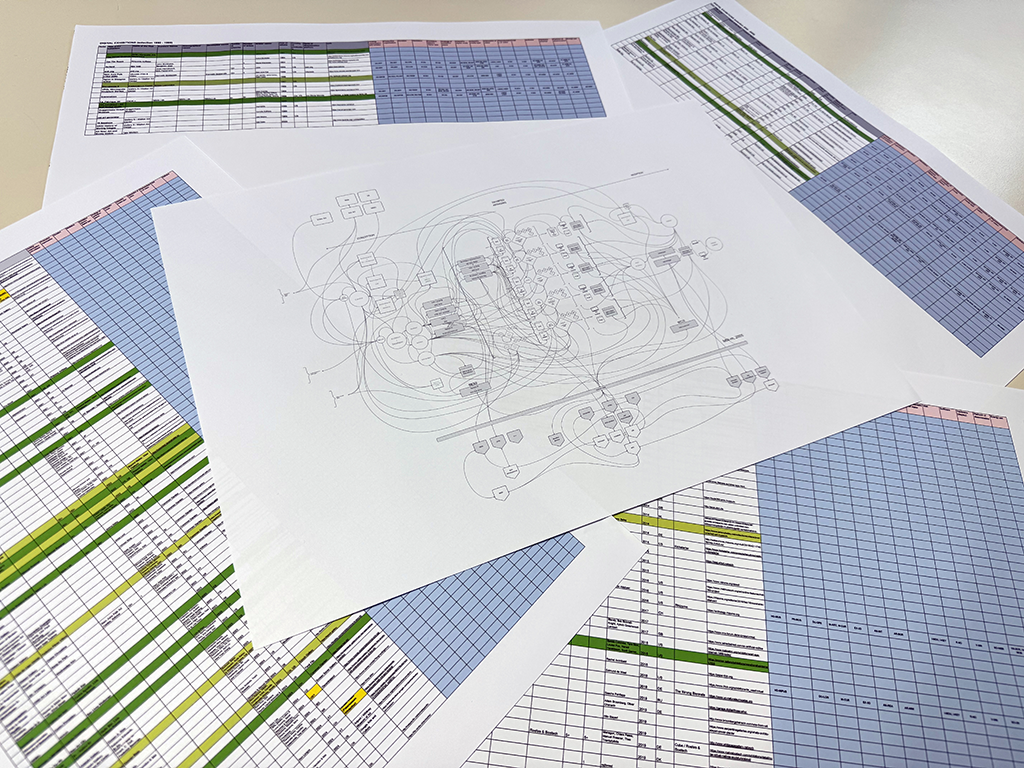


Paik Replayed’s research team is currently engaged in collecting, tagging, and assessing past and recent digital exhibitions, some of which include artworks by N. J. Paik. A smaller selection of significant cases will be further mapped out, in order to go into greater details and enable us to better understand and compare their “network” (people, artworks, ideas, artifacts, algorithms, machines, energy, infrastructures).
This first research objective will last until early next year.
While recalling some of the emblematic mediated exhibitions that preceded them, we started to collect cases from 1993 onwards (Mosaic‘s web browser year of release, which made it the “first” web browser widely available to the general public on personal computers), expanded to the whole of the 90s. Since then, we cover more than three decades: the 90s, the 00s, the 10s and the ongoing 20s.
Over 150 cases are currently being selected, analyzed and tagged (we’re also compiling a list of 16+ categories of tags, for a total of around 140+ tags, that is slowly asserting itself as a “table of elements” for digital exhibitions), in order to later establish a database for academic use and derive categories and types of digital exhibitions from its mining.
We’re aware that the idea of exhibiting remotely—in a mediated, or “virtual” way—can be traced back as far as the 1970s and up to the early 90s, when the web took over (J. Shaw’s “virtual museum” in 1991, N.J. Paik’s earlier experiments in the 70s and 80s with television broadcasting, or from the WNET TV Lab studios, possibly also experiments on the French Minitel during the 80s, etc.), not to mention art groups willing to show their work outside museum walls, for as long as the latter have existed. But these cases were not already digital (analog video or audio , for instance), or were to be considered as media art installations within the material space of the museum, clearly foreshadowing developments to come.
Our framing of the digital exhibition concept in this research is thus closely related to the online world, and the “explosion” of the Net Art movement during the ’90s and the “expansion” that followed—to the point that all digital content is now accessible online, in a way or another—as well as to the idea of the “online exhibition” associated with it (an endeavor well studied by A. Dekker in 2022, or listed before by artist O. Laric, back in 2013). It links our selection of cases to the general idea that digital exhibitions should also be accessible from outside the institution and the physical confines of the museum.
We extend this definition, however, to the installative, performative and hybrid (both physical and digital) dimensions that have developed since then (mainly from the ’10s onwards—often also referred to as “post-internet” and “post-digital”—although there are significant earlier cases, as our list shows). We further broaden it to include the exhibition of non-digital native artworks, weighing in the concepts of transposition and digital copies, or versions of artworks. It’s in this context that some of N. J. Paik’s artworks can be observed as being “replayed”.
Taken altogether, these factors tend to suggest that the digital (online) exhibition could represent a genuine hybridization and extension of the museum’s missions, of its temporal and physical spaces.